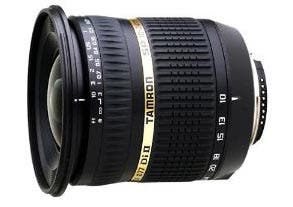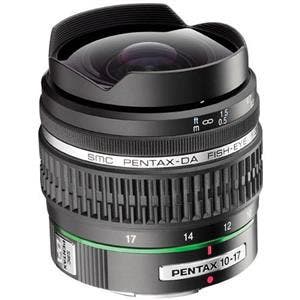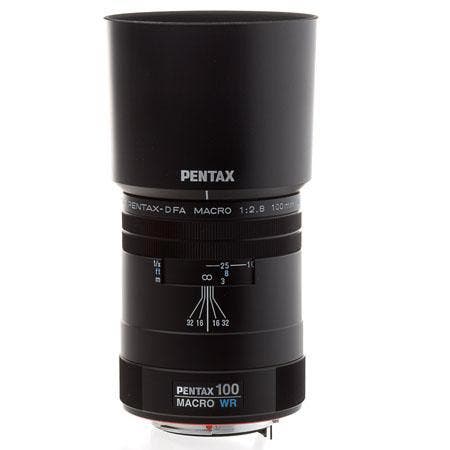Chances are if you bought your first interchangeable-lens camera, a DSLR or MILC, then you’ve got a mid-range zoom “kit” lens. For a while things were good, but then you became frustrated with the lens’s limits. If you’re ready to bring the thrill back to photography, it’s time to buy your second lens!
The mid-range kit zoom lens that most likely came with your first DSLR or MILC, with its f/3.5 aperture and approximately 28-70mm (35mm equivalent) zoom range, was good enough for you when you first got it, but after some time taking pictures with your outfit you’re feeling it’s not enough, and you are ready to add another lens. Adorama carries hundreds of lenses for DSLRs and MILCs in our lens department, but the choices can be overwhelming. Which way should you go?
While a kit lens is a jack of all trades and master of none, your second lens may be more specialized and more tightly fitted to your interests. It will be driven by the kind of photographs you are most likely drawn to, and which you want to do better. A great second lens will let you see things from a new perspective and help you take your photography to the next level.
Let’s take a look at four different types of lenses that can have an exciting, transformative effect on your photos.
Portrait Prime

Who doesn’t want to shoot flattering portraits of their family and friends? A portrait prime is a non-zoom lens with a wide aperture, which lets you throw the background into a pleasing blur while keeping your subject’s face in sharp focus. The field-flattening characteristics of a modest telephoto lens will result in a more flattering of your subject’s face (compared with the distortion that a wide-angle lens will create). While autofocus is useful here, it’s not absolutely necessary, and as you’ll see, the most expensive lens on our short list is a manual focus mode!
Budget

Nikon 50mm f/1.8G AF-S Nikkor
Adorama price:
The 50mm has been the lens of choice general photography for generations of photographers for its versatility, sharpness, and reasonable price. It’s a popular choice among pro family and lifestyle photographers for portraits, as well as enthusiasts and beginners. Used with an APS-sensor DSLR, a 50mm becomes a 75mm telephoto lens, which provides you with a good portrait working distance so you’re close to your subject, but not too close. Best of all, since 50mm f/1.8 lenses are so popular, you can either buy a new one or snap up a less expensive used version and save more.
Mid-Range

Canon EF 85mm f/1.8L
Adorama price:
With its medium-telephoto range and wide f/1.8 aperture, the Canon 85mm f/1.8 is designed for portrait photography. It offers fast autofocus, a non-turning front element so you can add a circular polarizer filter (it takes 58mm filters), and rounded aperture blades, which produce pleasing out-of-focus areas of the images, known in Japanese as “Bokeh.” It is lightweight but rugged for a mid-range lens, and the focal length provides enough compression to create truly flattering images.
Pro
Carl Zeiss 85mm f/1.4 Planar T* ZE
Adorama price: $1,283 (Canon, and Nikon)
Nothing approaches Carl Zeiss lenses when it comes to image quality and solid construction. The 85mm f/1.4 Planar T offers a faster wide-open aperture for even more dramatic focus fall-off when shooting wide-open. As with the Canon 85, at maximum aperture overall image quality can may be softer, which can be a very good thing when you’re trying to shoot flattering portraits. While this is an excellent lens for full-frame cameras, it will also work with cameras that have APS sensor, offering an equivalent field of view of a 128mm lens. No autofocus? If you’re shooting with a Nikon, your camera will give you a “focus confirmation” beep to let you know when your subject is sharp.
Want to learn about more prime portrait lenses and how they compare? Read the Adorama Learning Center‘s exclusive 85mm portrait lens round-up.
Macro

Macro lenses are magical: A true 1:1 macro lens can transform everyday objects into other-worldly scenes. Use a macro lens for flowers, photographing jewelry, or any other everyday item and turn it into extraordinary and creative art that you can share proudly.
Budget
Nikon 40mm f/2.8G AF-S DX Micro Nikkor
Adorama price:
The Nikon 40mm, one of the best macro lens values, is designed for APS-sensor Nikon DSLRs such as the D3200, D5200 or D7100, is a true 1:1 macro lens right out of the box (some competitively priced macro lenses actually fall short of true macro and require an adapter for $100 or more). Because of its short focal length (which comes out to 60mm on a 35mm sensor), the working autofocus distance is a close 6.4 inches, which allows you work in tight spaces, but may not be ideal if you’re shooting skittish insects. The lens doesn’t rotate during focusing, so you can use a circular polarizer. The aperture consists of seven rounded blades for pleasing bokeh.
Mid-Range
Pentax D-FA 100mm f/2.8 Macro WR
Adorama price: (Weather Resistant) Auto Focus Lens
Here will inevitably be times when shooting macro outdoors when you’ll want to shoot in the rain (how else are you going to capture those stunning water droplets?) Pentax makes a line of modern DSLRs such as the K5 II that are weatherproof, and the Pentax 100mm f/2.8 macro is, likewise, sealed against rain, mist, and dust so you can shoot macro just about anywhere under any weather conditions (except underwater). Its 100mm translates to a 150mm 35mm equivalent angle of coverage, and it offers a close (but not too close) 1:1 macro working distance of about a foot).
Pro
Canon EF 180mm f/3.5L Macro USM AutoFocus Telephoto Lens
Adorama price:
In some macro situations, getting up close is impractical because there is foliage blocking your way, or you are photographing a subject that might get spooked by a close camera. In these cases, a longer telephoto macro zoom is what you need—but you’ll have to pay a premium for it because the engineering effort required to make a longer lens that will keep a flat field in focus at 1:1 is greater. Canon’s 180mm macro lens is compatible with both full-frame and APS sensor Canon DSLRs, and offers a working distance of 1.6 feet—which may be just enough breathing room.
Read the Adorama Learning Center’s Macro Lens round-up to find more choices for macro photography.
Tele-Zoom

Tele-zoom lenses get you closer to distant subjects, great for zoo safaris (or the real thing), action close-ups of Junior’s soccer match, or shooting flattering portraits. Since longer focal lengths compress depth of field, backgrounds can be rendered a pleasing blur, emphasizing your subject—although the smaller aperture means the background will be blurred, but not as blurred as you’d get with a fixed-aperture lens. Be sure that either the lens or camera has image stabilization, or use a tripod or monopod to keep the camera stable, because the longer the zoom, the more it will magnify camera movement.
Budget
Sigma 50-300mm f/4-5.6 DLM DG
Adorama price: $169 (Canon, Nikon, Pentax, Sigma , and Sony)
Each camera company offers a budget tele-zoom, and often sells DSLRs in kits that include these lenses. Designed to deliver the best image quality at the middle aperture (f/8-11), budget tele-zooms have variable maximum apertures. So, if the widest aperture is f/4 at 50mm, it will close down to f/5.6 at 200mm, which means you’ll need to shoot at a higher ISO to maintain a motion-stopping shutter speed. The Sigma 50-200 has internal image stabilization that will help reduce camera motion and a Hypersonic Motor for quiet and fast autofocus. Because the front of the lens doesn’t rotate as you focus, you can easily use circular polarizing filters with this lens. The lens focuses to 43.3 inches for 1:1.45 magnification, stops down to f/22, and takes 55mm filters.
Mid-Range
Canon EF 70-200mm f/4L USM lens
Adorama price:
This classy white-bodied lens not only will let you get up close to the action, but it will give you the pro look without having to spend a pro’s budget. The EF 70-200 zooms internally—it does not get longer as you increase the focal length—and it also focuses internally, with no rotation of the front element. The glass on this lens is treated to greatly reduce chromatic aberration, while geometric distortion and vignetting are virtually unheard of. The 8-blade aperture is consistent throughout the focal range (on less expensive lenses, the aperture gets smaller as you zoom farther), and the lens stops down to f/32. How does such a pro-quality lens get to cost so little? First, there’s no Image Stabilization; for that, you’d need to pay around a grand. Consider buying a tripod collar, which goes around the lens barrel, to improve balance when using a tripod or monopod. Second, the f/4 aperture, while really good, isn’t as fast as f/2.8, which is what you’d get on a full pro lens. However, if you want outstanding quality, are flirting with the idea of going pro, and own a Canon DSLR (either full-frame or APS), this is a great lens to have…and you can always trade up to the IS version or the Canon 70-200mm f/2.8L IS II.
Pro
Nikon 70-200mm f/2.8G ED VR II AF-S Lens
Adorama price: $2,096.95
With its fast f/2.8 wide aperture, which remains the same throughout the zoom range, the Nikon 80-200mm is a no-compromise lens for pro-caliber, action-stopping wildlife and sports photography. With 16 elements in 11 groups including seven with extra-dispersion “nano crystal” coating to reduce chromatic aberration and improve contrast, Nikon says this lens offers up to 4 stops of image stabilization. This lens is solidly constructed to stand up to the rigors of daily professional use, with rubber gaskets to prevent dust and water from seeping in. Due to its size and weight, a tripod or monopod is a necessity. The lens focuses and zooms internally, the front element (which takes a 77mm lens) does not rotate, and the smallest aperture is f/22. Closest focus is 4.6 feet.
Ultra-Wide Angle

Ultrawides are great for architecture photography, travel, photojournalism, or sweeping landscapes. Where most kit lenses stop at 18mm (for an APS camera) or 28mm (for a full-frame), an ultra-wide angle can get as wide as 10-12mm, which takes up to 180 degrees, which is fisheye territory. When shopping for a wide-angle lens (either a fixed focal length or zoom) beware that linear distortion—which bends and distorts straight lines near the edges of the frame—is common with this type of lens. Higher-end ultra-wides tend to have less distortion than cheaper ones.
Budget

Tamron 10-24mm f/3.5-4.5 DI-II LD AF Lens
Adorama price: $499 (Canon, Nikon, Pentax, and Sony)
Covering an extended focal range that starts at a 10mm, the Tamron ultrawide covers a maximum 180-degree angle of view but projects a full-frame image on an APS sensor (sorry, it doesn’t work on cameras with full-frame sensors). The Tamron 10-24 is a versatile all-around wide-angle lens that’s great for travel, special effects, environmental portraits, and sweeping scenics. It covers the equivalent of a 16-37mm lens on a 35mm sensor camera.
Mid-Range

Pentax 10-17mm f/3.5-4.5 (IF) SMCP-DA
Adorama price:
With its ultrawide 10mm starting point, the super-compact 10-17mm Pentax can take in up to 180 degrees but unlike traditional fisheyes, which project a round image on the rectangular image area, this one fills the entire frame. It is designed specifically for APS-sensor Pentax DSLRs and is fun to use. Yes, the distortion is wacky; accept that and you can create some magical transformations. Zoom in to 17mm and you get a more traditional wide-angle image (approximately equivalent to a 28mm lens) with much less distortion; that’s good for photojournalism and street photography. A responsive “quick shift” focus system lets you quickly change from manual to autofocus.
Pro

Sony 16-35mm f/2.8 ZA SSM Vario-Sonnar T* Digital Lens
Adorama price $1,898
The Sony 16-35mm f/2.8 is a super-fast pro lens that offers 3 aspherical elements and 2 ED (extra dispersion) lenses, which produce results with uncompromising quality and sharpness. The circular aperture blades produce pleasing Bokeh, and thanks to some miracles of optical engineering, the images show very little spherical aberration (in other words, less distortion than you’d expect from a wide-angle lens. The 16-35mm range provides roughly 26-50mm equivalent coverage on an APS sensor but since Sony also makes cameras with full-frame sensors, on them this lens can be used as a pure 16-35mm lens.











